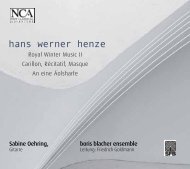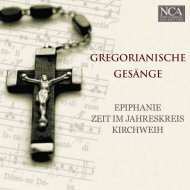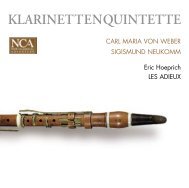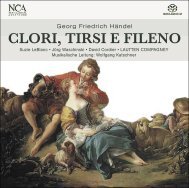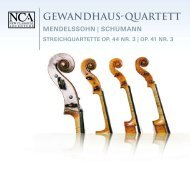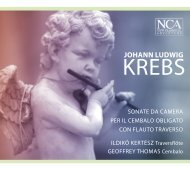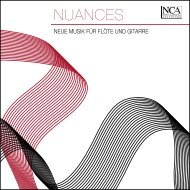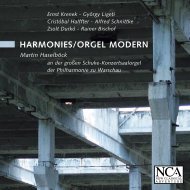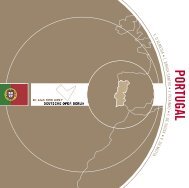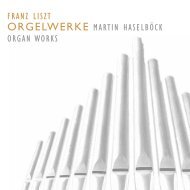georg philipp telemann (1681-1767) - nca - new classical adventure
georg philipp telemann (1681-1767) - nca - new classical adventure
georg philipp telemann (1681-1767) - nca - new classical adventure
You also want an ePaper? Increase the reach of your titles
YUMPU automatically turns print PDFs into web optimized ePapers that Google loves.
GEORG PHILIPP TELEMANN:<br />
“XII SOLOS À VIOLON OU TRAVERSIERE AVEC LA BASSE CHIFFRÉE” (1734)<br />
In 1734, when Telemann was fifty-three years old and at the height of his career as a<br />
composer, he published his Twelve Solos for Violin or Traverso and Basso Continuo. The<br />
collection was dedicated to ‘Rudolfe, Jeanne und Jean Guillame Burmester’ from<br />
Hamburg (Telemann wrote the French form of their names in the dedication.) As<br />
mentioned by the publisher in the introduction, this <strong>new</strong> set was a compliment to<br />
Telemann’s ‘Methodischen Sonaten’, published a few years earlier in 1728. The<br />
Burmesters were musical amateurs in the best sense of the word: they were wealthy and<br />
had a high reputation in society, and like nobility wanted to use their musical soirées as<br />
a form of recreation away from the drudgery of daily work. For such works as the<br />
‘Harmonischen Gottesdienst’ (1726), ‘Tafelmusik’ (1733), the ‘Getreuen Music-Meister’<br />
(1728), and the ‘Singe- Spiel- und Generalbaßübungen’ (1734) Telemann aimed his<br />
music both at professionals and amateur musicians. This is evident when one looks at<br />
the score, which reveals a union of acquired taste and considerable skill. This acquired<br />
taste, demanded from both the performer as well as the audience, is by all means no less<br />
than that found in his numerous and partially virtuosic solo concerti.<br />
The question why Telemann didn’t title his Twelve Solos as ‘Sonatas’ is not easy to<br />
answer, because they are in fact twelve four-movement sonatas written in a slow-fastslow-fast<br />
form, typical for church sonatas of the time. Also, when glancing at writing of<br />
the solos it becomes evident that the bass frequently appears as an equal partner to the<br />
solo voice, breaking free of its role and taking part in the musical dialogue. In such<br />
moments the music turns into a duo for an upper and lower voice, and how to deal with<br />
this constant color change in the bass line was a factor that was taken into<br />
consideration during the recording. Finally, Telemann doesn’t make the decision as to<br />
which of the twelve sonatas should be played by the flute which by the violin very<br />
easy. That is left to the performer, and Telemann refrains from any telltale<br />
characteristics specific to one instrument or the other, like for example the use of<br />
double stops on the violin. He is also careful that both the flute and the violin can play<br />
in the written key of each piece. In this recording, Mary Utiger and Michael Schmidt-<br />
Casdorff simply alternate the roles, so that the first sonata is played on the violin, the<br />
second on the flute, the third on the violin, and so on.<br />
SOME COMMENTS ABOUT THE CHARACTERISTICS, STYLE AND INTERPRETATION OF<br />
EACH OF THE SONATAS:<br />
The opening movement, of the SOLO I IN F MAJOR, Andante, could also be titled<br />
‘Nobile.’ Sublime in character, with broad gestures and arpeggios in the upper voice, it<br />
gives a feeling of loftiness. A Vivace follows, whose syncopated beginning is folkloric in<br />
fashion. The rest of the movement is filled with various figures that play off of each<br />
other, developing into a dialogue between melody and bass. This is also the case in the<br />
Grave that follows, where the two voices are treated as equal partners alongside each<br />
other. Its opening motive of a rising minor sixth presents the general character of the<br />
entire music, that of lamenting and disappointment. In contrast the closing movement,<br />
an Allegro written in the manner of a gigue, comes across as somewhat overly<br />
enthusiastic and cheerful.<br />
The SOLO II IN E MINOR conjures up a picture of a pastoral idyll: the first movement,<br />
Cantabile, is like a siciliano swaying in 6/8 time, and immediately one recalls Quantz’s<br />
comments in his 1752 “Versuch einer Anweisung die Flöte traversiere zu spielen" about<br />
how the siciliano should be played like a shepherds dance. In this bucolic sphere one also<br />
finds something capricious in the music, reminding one about a more rebellious meaning<br />
of the word ‘moody.’ Here the two fast movements of the sonata are like a capricciothrough<br />
syncopations, insistent note repetitions or large leaps they are generally<br />
obstinate, defiant and unruly. The slow third movement presents the exact opposite -<br />
the motivic repetitions of the notes carry an air of questioning and uncertainty.<br />
22 23



